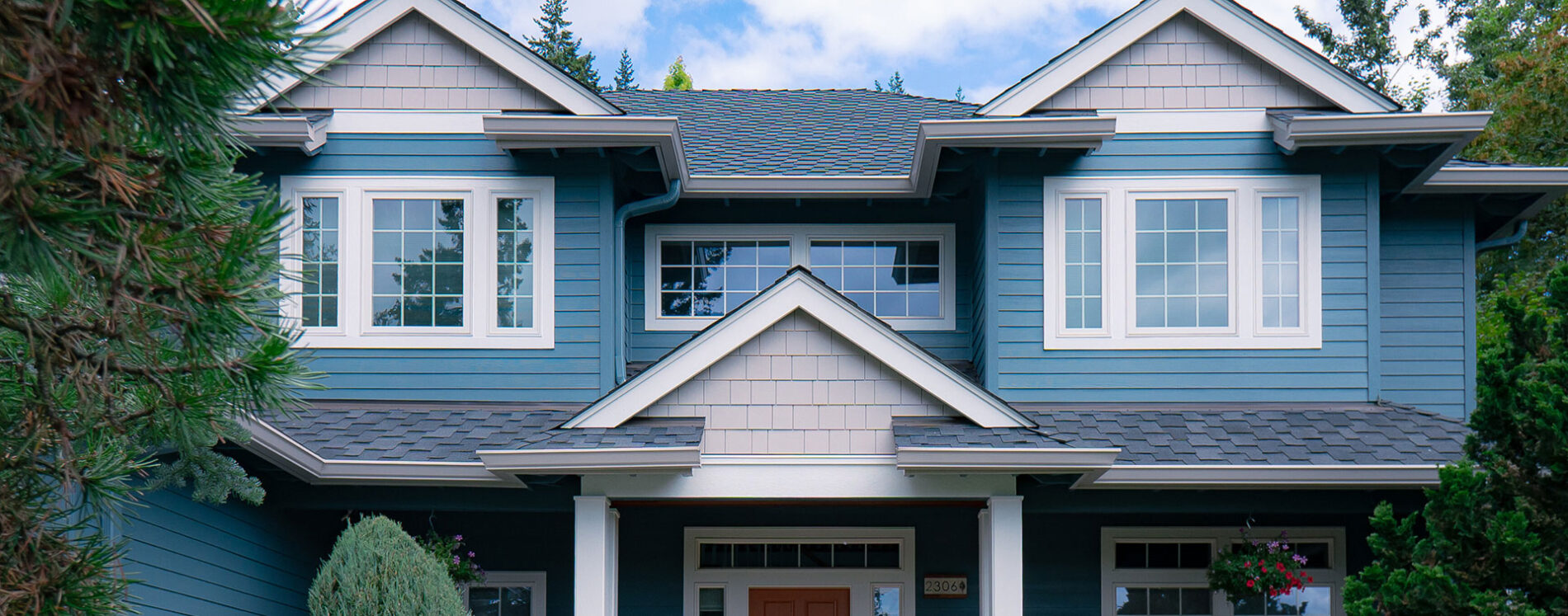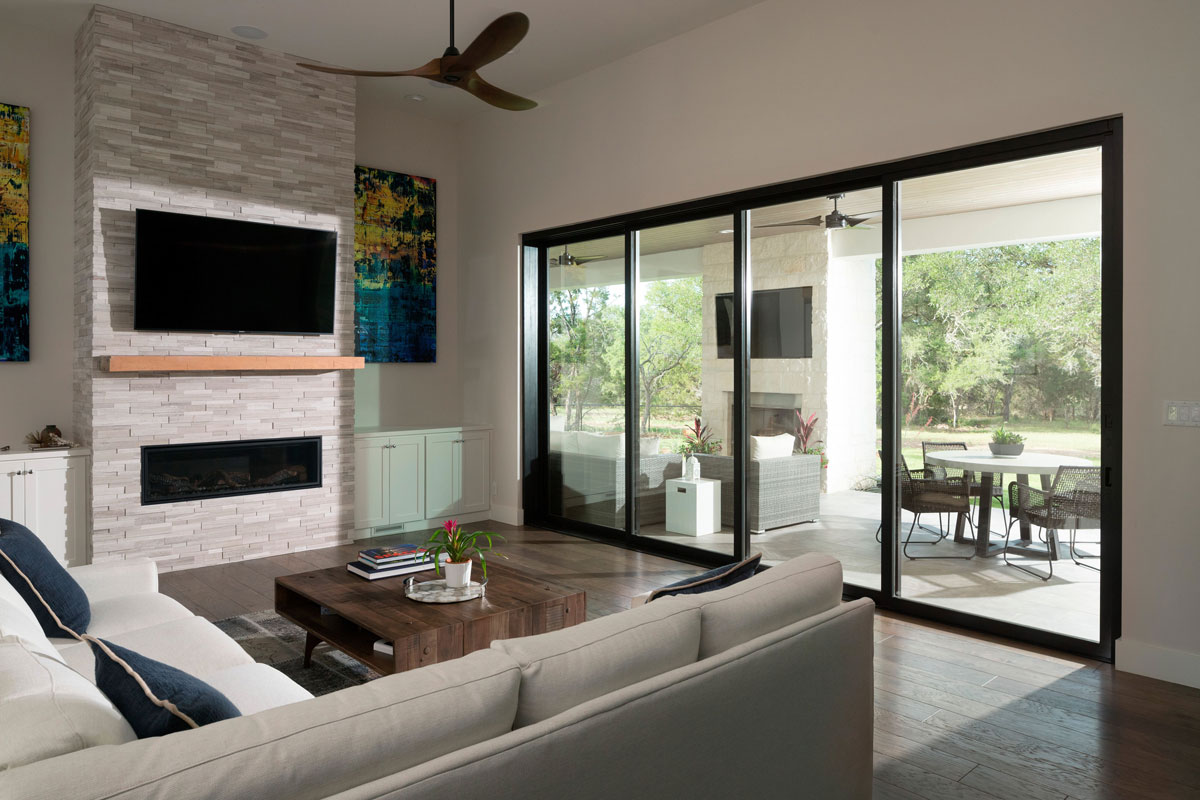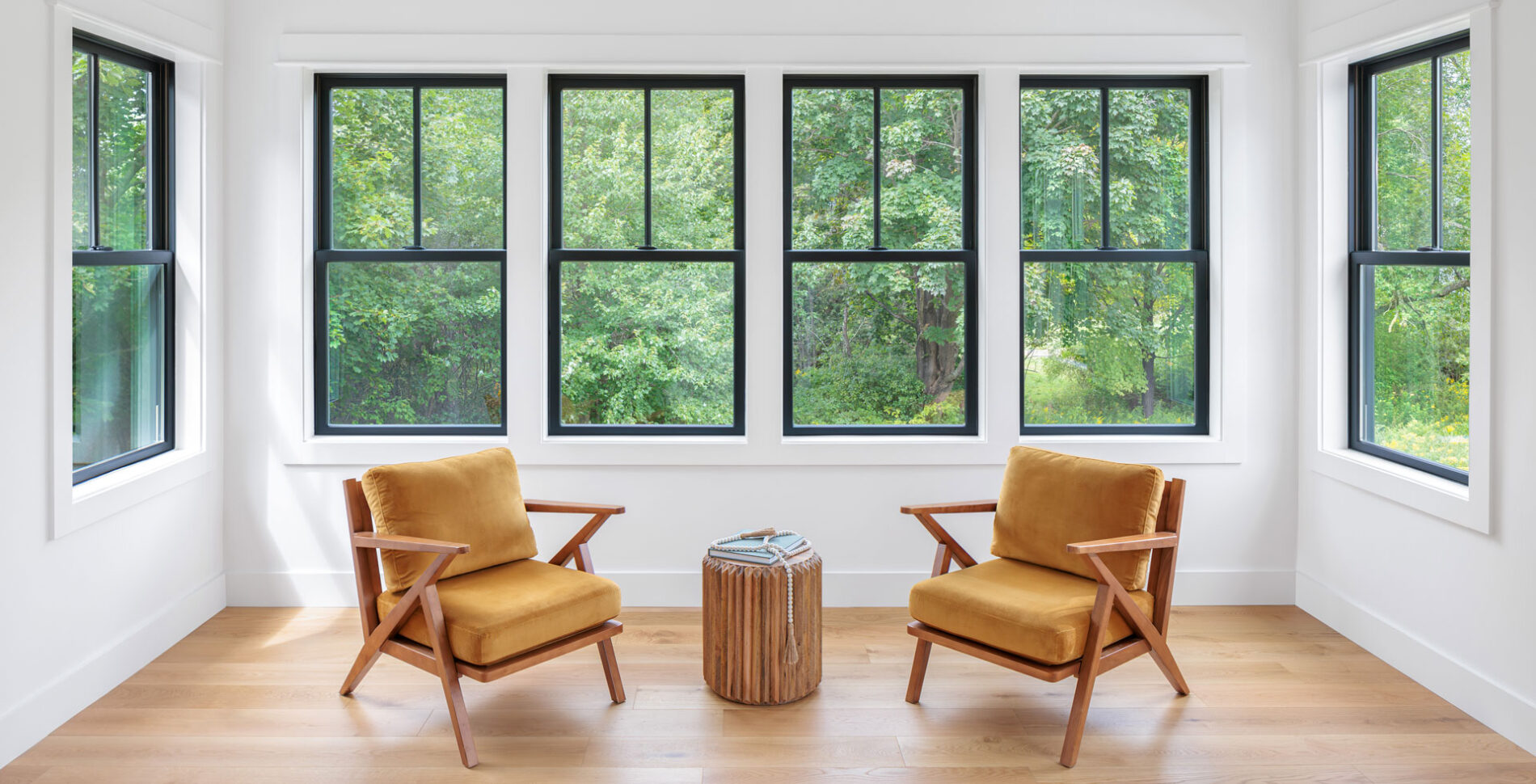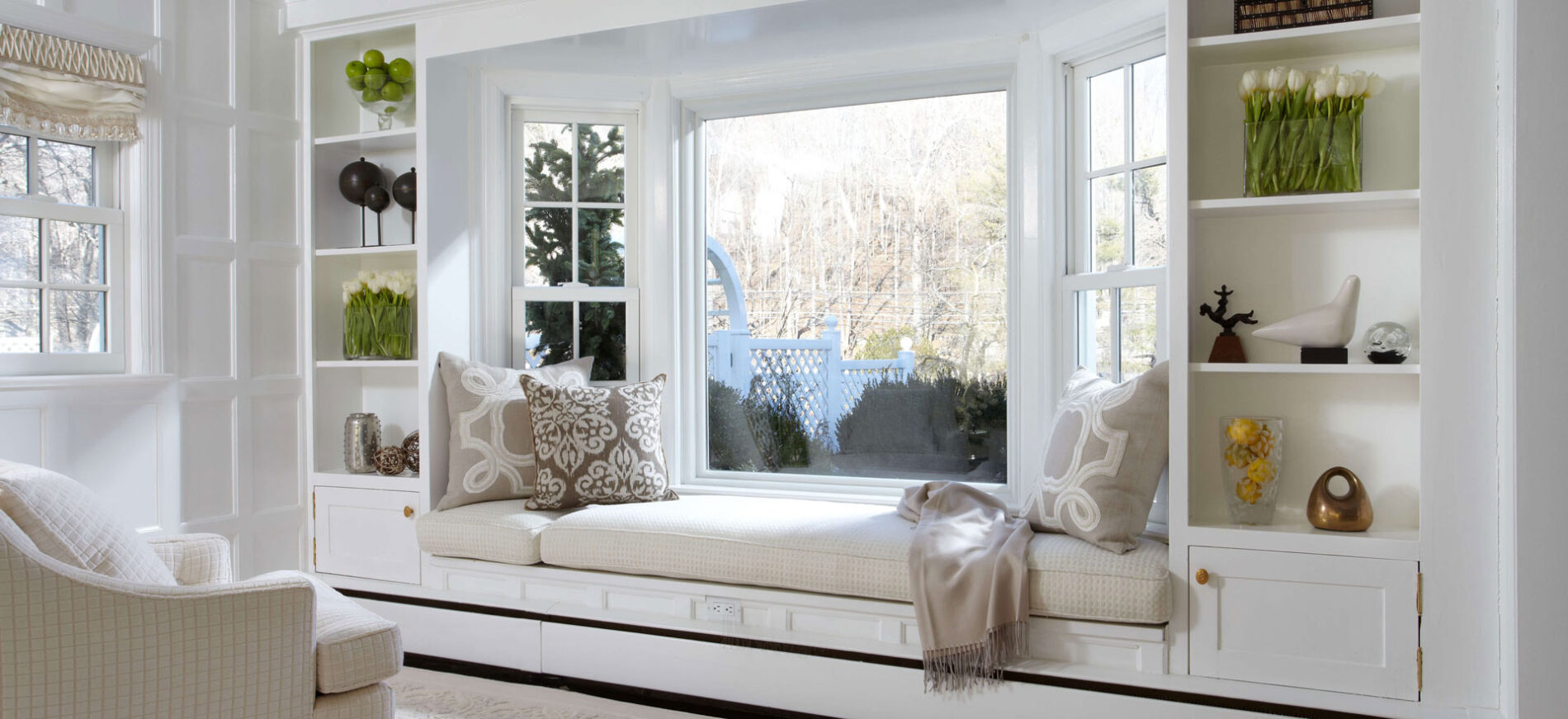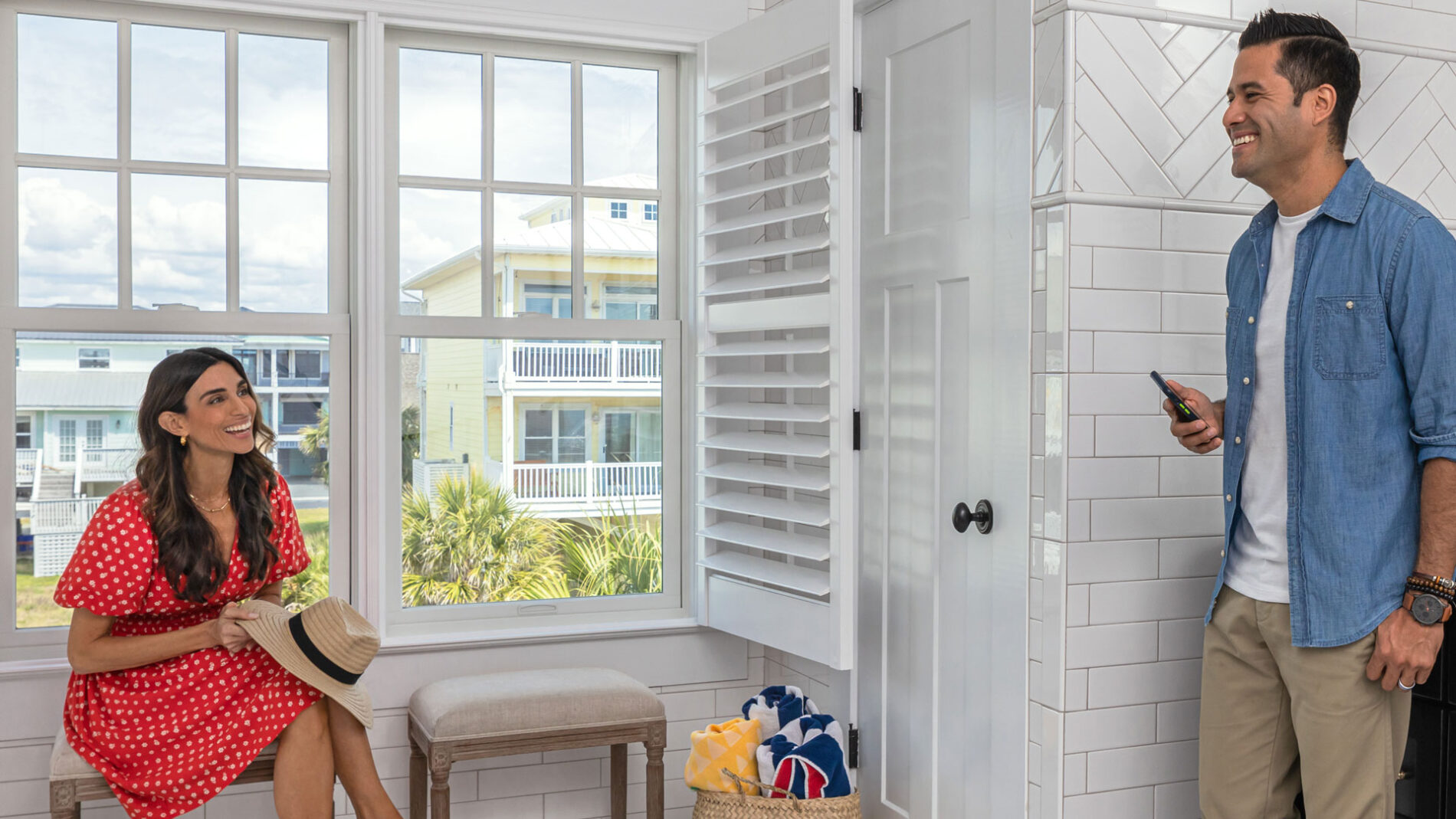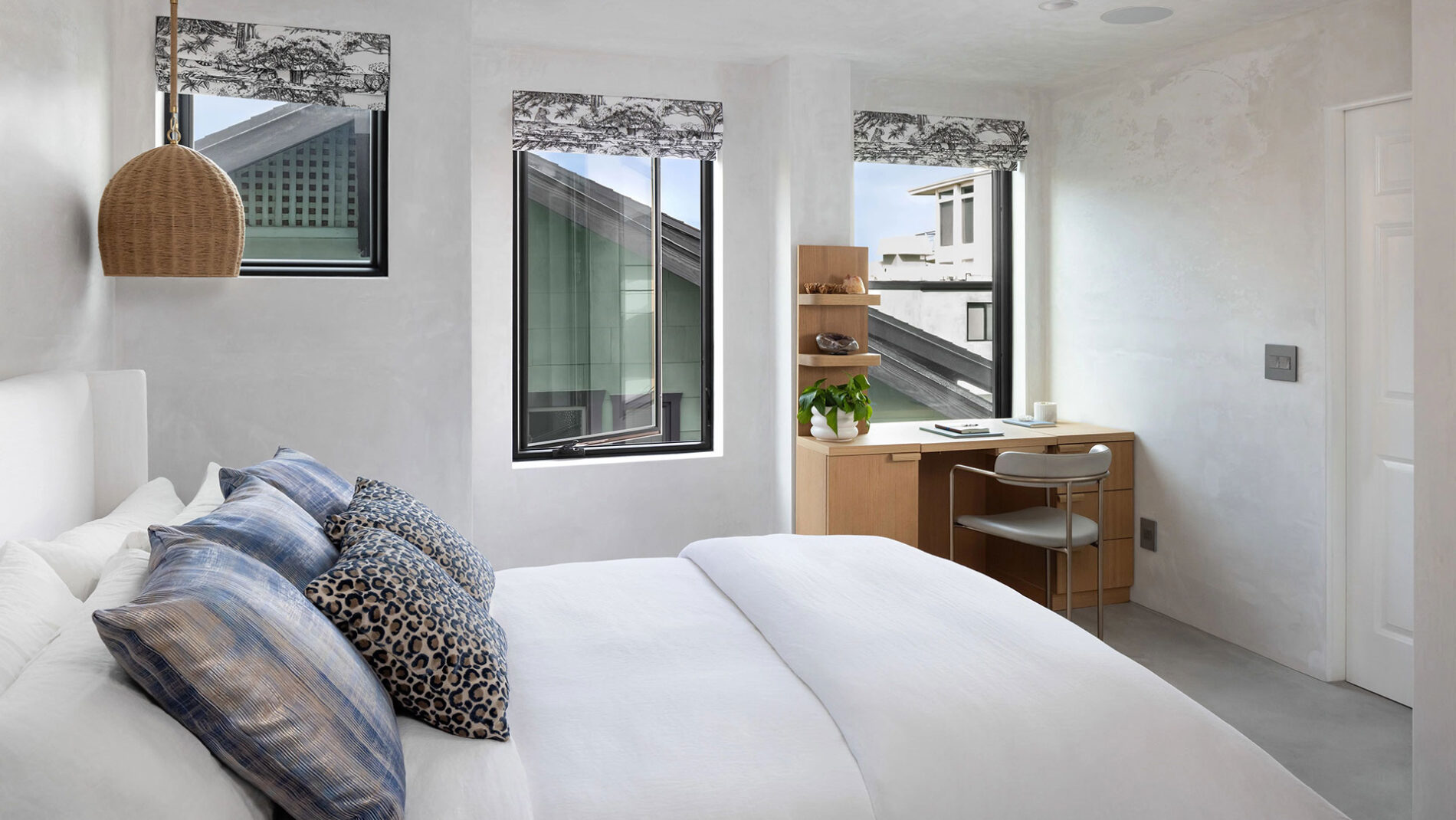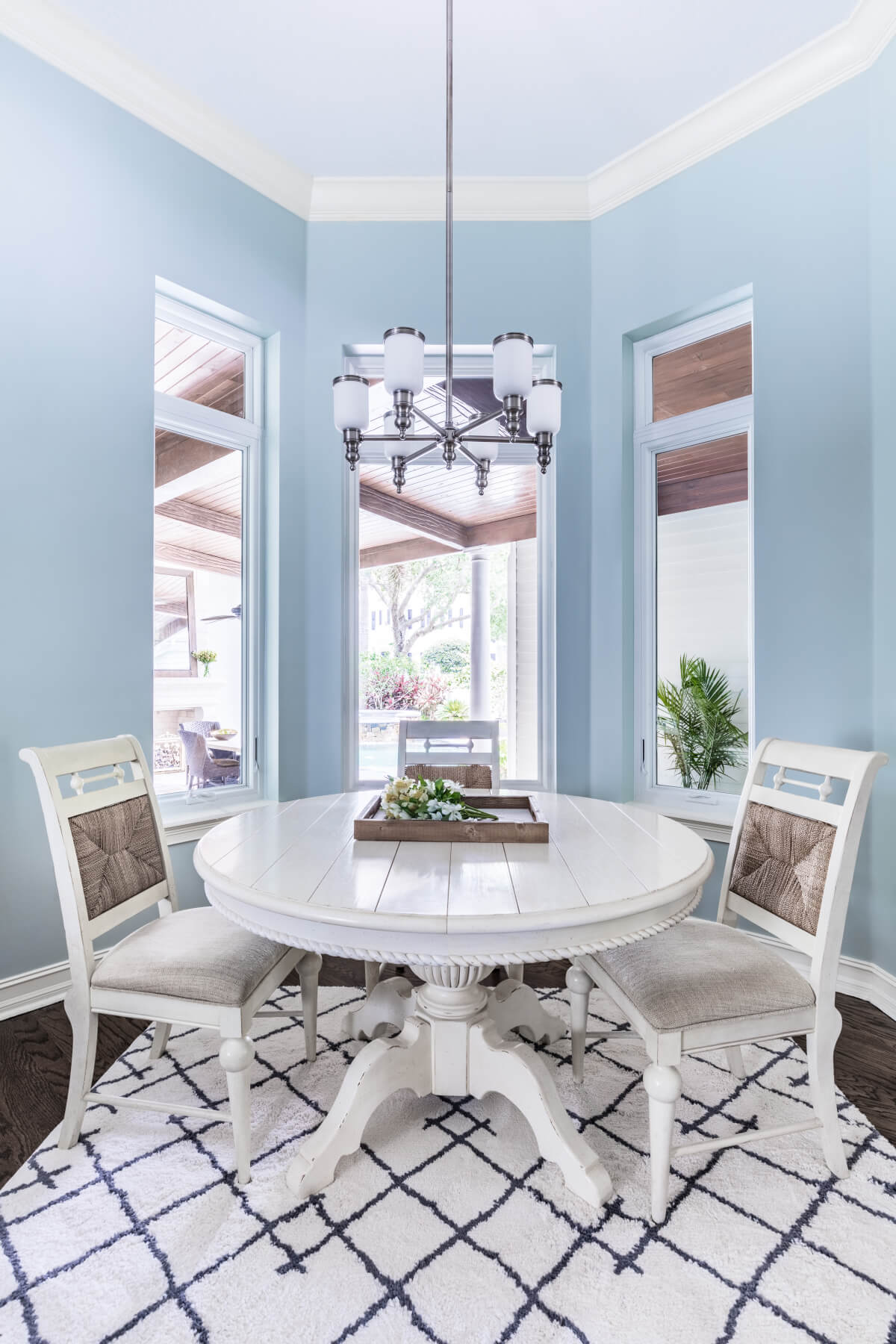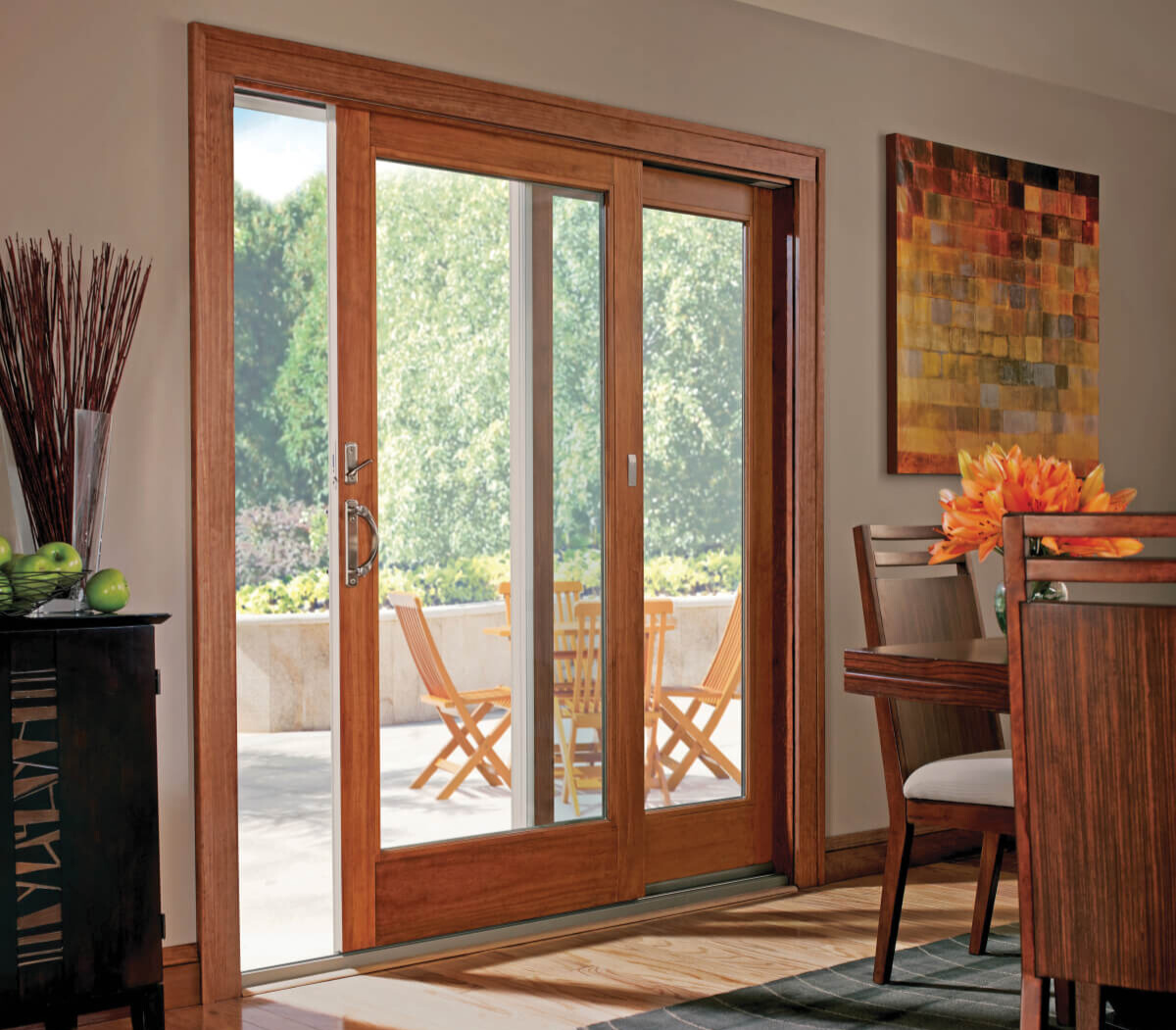Windows with Grids
What are windows with grids called? The terms “grids,” “grilles,” and “muntin” refer to the dividers that create the small panes in windows and doors, but there are some subtle distinctions and variations in usage.
- “Grids” is a general term for the overall pattern created by the muntins or grilles in a window.
- Muntins is the most technical term. These dividers describe the structural elements that hold separate panes of glass together in a window sash. Traditionally, muntins were made of wood and played a vital role in keeping the window together. You may see muntins in older, traditional-style home windows.
- Grilles are purely aesthetic and don’t provide any structural support. They can be added to the inside or outside of a window to create a grid pattern.
In modern windows, muntins are less common because advances in glass manufacturing allow for larger, single sash panels. However, grilles are still widely used for their decorative effect. Let’s learn more about the best grille design for your home style, where to place your grids, and how to customize your windows with grids.
Window Grid Pattern Options
When choosing a grid pattern for your replacement window, there are several choices available! Each grille design will depend on the architectural style of your home. The patterns vary in number of dividers, area of glass coverage, and even width of dividers.
If you’re unsure whether window grids are right for your home, consulting with a window professional can be helpful. They can advise you on the style that best suits your home’s architecture and your personal preferences.
Colonial Window Grid Patterns
Colonial grille patterns are a perfect choice for houses that aim for a classic and traditional look. In addition to the following specific styles, colonial grilles can also be a good choice for other traditional house styles that incorporate double-hung windows and a symmetrical design.
- Colonial houses are a natural fit for colonial grilles. The symmetrical design complements the simple and balanced lines of the colonial grille pattern.
- Cape Cod houses are another ideal home style for colonial window grid patterns. These charming one-and-a-half-story homes often have a similar aesthetic to colonials, with symmetrical features and double-hung windows. Colonial grilles enhance the cozy and traditional feel of Cape Cod houses.
- Distinguished by their rectangular shape, balanced proportions, and decorative details, federal houses can also benefit from colonial window grid patterns. The clean lines of the grilles complement the overall formality of the federal style.
- Similar to federal houses, Georgian houses feature symmetry and grand proportions. Colonial grilles can add a touch of classic elegance to the large windows often seen in Georgian homes.
Farmhouse Window Grid Patterns
Farmhouse window grid patterns lean towards a more rustic and casual aesthetic compared to the colonial grilles. Here are some house styles that would be well-suited for farmhouse grille patterns:
- Farmhouses are a natural fit, echoing the historic use of grilles in farm buildings.
- Craftsman bungalows feature clean lines and an emphasis on natural materials which complements the simple yet stylish look of farmhouse grilles.
- Ranch houses are known for their long, horizontal lines and open floor plans. Farmhouse grid patterns can add a touch of visual interest and character to ranch style windows.
- Rustic houses, including log cabins and chalet-style homes, often incorporate natural materials and a connection to nature. Farmhouse grilles can reinforce the rustic vibe.
- Cottage houses are known for their cozy and quaint feel. Farmhouse grilles can add a touch of farmhouse charm to these homes.
Overall, any house style that aims for a relaxed, rustic, or vintage look can benefit from farmhouse window grid patterns. They work well with windows that are double-hung or casement styles.
Prairie Window Grid Patterns
Prairie window grids are a distinct style characterized by strong horizontal lines that echo the vast, horizontal landscapes of the American prairies. They are a signature element of Prairie School architecture, a style popularized by architect Frank Lloyd Wright in the early 20th century.
Prairie window grid patterns work best with Prairie School or bungalow style homes. These grilles can also complement craftsman or ranch style houses aiming for a more horizontal aesthetic. There are two styles of prairie windows grid patterns to choose from, depending on personal preference and home architecture.
1. Classic Prairie Grille
You can identify Prairie window grid patterns by the following characteristics:
- Horizontal emphasis: The most recognizable feature is the use of strong horizontal lines that divide the windowpane into rectangular sections.
- Large glass panes: Prairie windows tend to favor larger panes of glass in rectangular proportions, complementing the horizontal lines and creating a sense of openness.
- Clear glass: With Prairie style, homeowners typically avoid stained or colored glass. Clear glass maximizes natural light and connection to the outdoors.
2. Modified Prairie Grille
Modified Prairie window grids take the basic concept of Prairie grids and introduce some variations. Primarily the Modified Prairie grid pattern has fewer grids than the traditional Prairie grille. This design can provide a slightly modern twist on a traditional grid pattern.
Craftsman Window Grids
Craftsman window grids are a distinctive feature of the Craftsman architectural style, emphasizing vertical lines and a clean, simplistic design. This style is rooted in the philosophy of simplicity, functionality, and the use of natural materials.
Craftsman windows primarily use vertical muntins or grilles that divide the upper sash, typically seen in double-hung windows. The panes formed by the vertical grilles are usually square or slightly rectangular.
Windows with grids only on top offer a unique look that blends modern simplicity with traditional charm. The absence of grids on the lower sash provides an unobstructed view, maximizing the amount of natural light. For homes with a Craftsman influence, this grid pattern works well in various architectural styles, adding a touch of character without overwhelming the window’s design.
Custom Window Grids
Custom window grids are decorative or structural dividers designed specifically for your windows. You can create a grid pattern that complements your home’s architectural style and your personal taste.
Custom grids are made to the exact measurements of your windows, ensuring a clean, professional look. This is especially important for irregularly shaped windows or those with unique designs.
Interior, Exterior, and Between Glass Grids
With Renewal by Andersen, homeowners have three grille types available. They are able to work with a professional window designer to choose the best windows with grids. Explore our grille types below.
Full Divided Light Grilles
Full divided light grilles mirror traditional divided glass. Fibrex® material is used to build an exterior grill. This glass grid also includes an aluminum spacer between the pane as well as an interior grille that is permanently attached. Renewal by Andersen offers two different widths for variety for homeowners.
Between-the-Glass
Between-the-Glass is a convenient option for homeowners. In this design the grid is permanently installed between the windowpanes during manufacturing. Homeowners can still enjoy windows with grids without the hassle of cleaning the individual dividers.
Interior Wood Grilles
Homeowners can remove the interior wood grilles for easy cleaning. Made from hardwood, they snap into clips on the inside of the window sash. Enjoy customizing this grille pattern to match your preference.
Grids vs no grids on windows, making the decision
The choice between grids and no grids for your windows comes down to aesthetics and functionality.
Grids
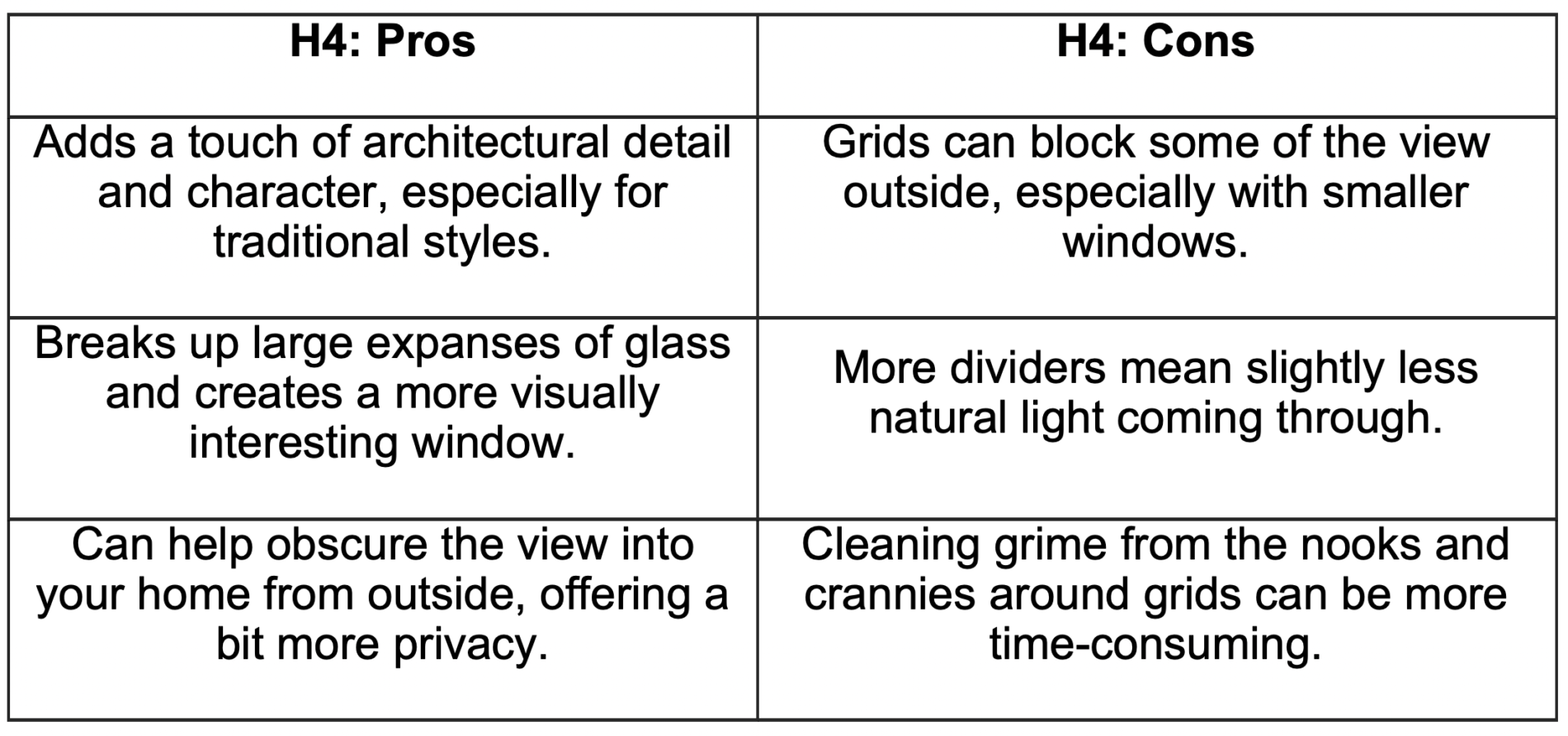
No Grids
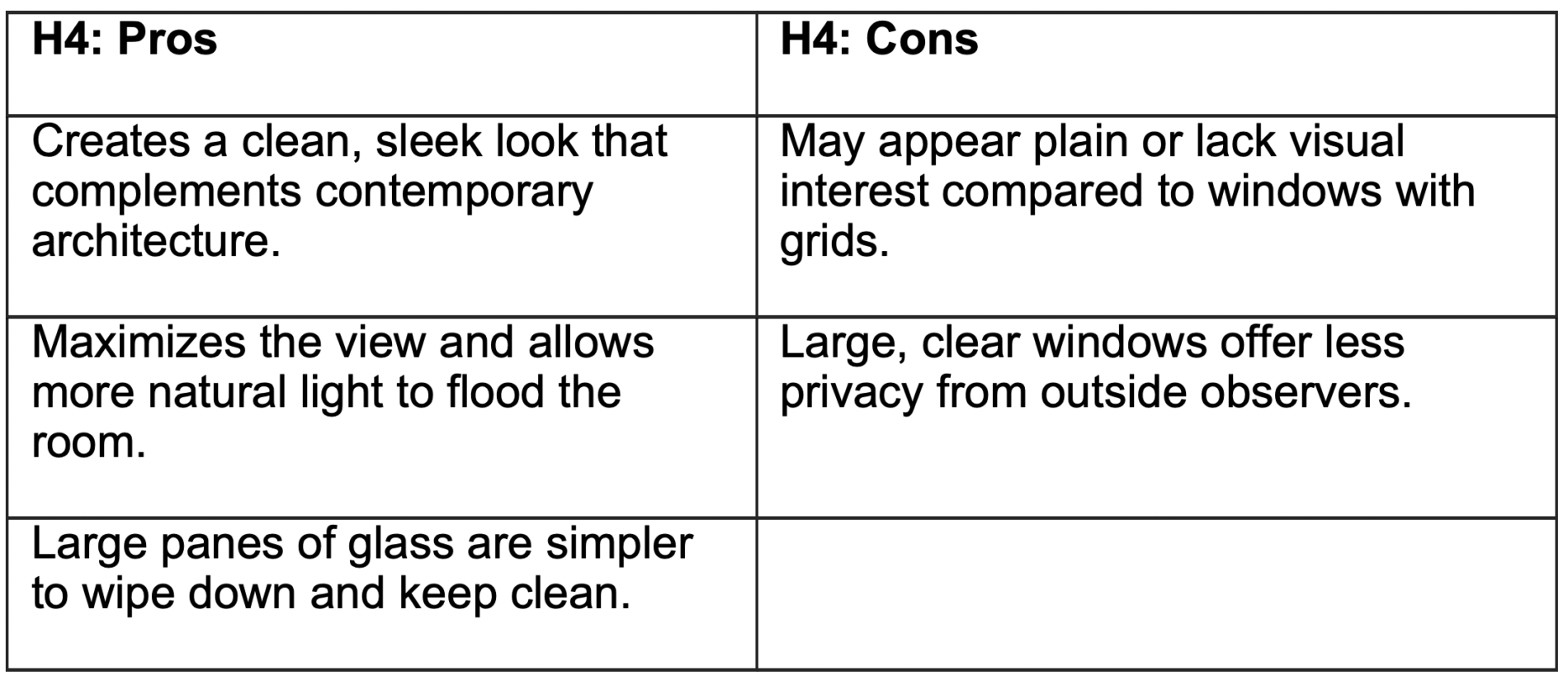
Mixing Grids and Gridless
There’s no rule that says all your windows need to match. You can combine grids and gridless styles depending on the specific window and the overall look you’re going for. For example, you might use grids on windows facing the street for privacy and keep the backyard windows gridless to maximize the view.
Ultimately, the decision between grids and no grids is a personal one. Consider your home’s architectural style, your desire for natural light and views, and your cleaning preferences to make the best choice for your windows.
FAQs About Windows with Grids
Do window grids add security?
Windows with grids can add a deterrent effect to potential burglars. Psychologically, the presence of grids can signal to a burglar that the homeowner is security-conscious, making them less likely to attempt a break-in. While not impossible to break through, grids may slow down a burglar and make them more likely to target an easier entry point.
Grids are not a foolproof security measure. For more robust security, consider additional measures like alarm systems or security film.
Are windows with grids still in style or outdated?
Windows with grids are not outdated, but choosing window grids depends on the architectural style. Classic styles, like Colonial and Craftsman, often benefit from the added character and detail that grids provide. Gridless windows with clean lines are generally considered more modern and minimalist.
However, there’s no hard and fast rule. You can achieve a stylish look with either grids or no grids, depending on the overall design of your home. Mixing grids and gridless styles can also be a creative option.
Ready to start your window replacement? Find Renewal by Andersen near you to schedule a free, in-home consultation. Our local team is eager to help you choose the best windows with grids for your home. Get started today!


